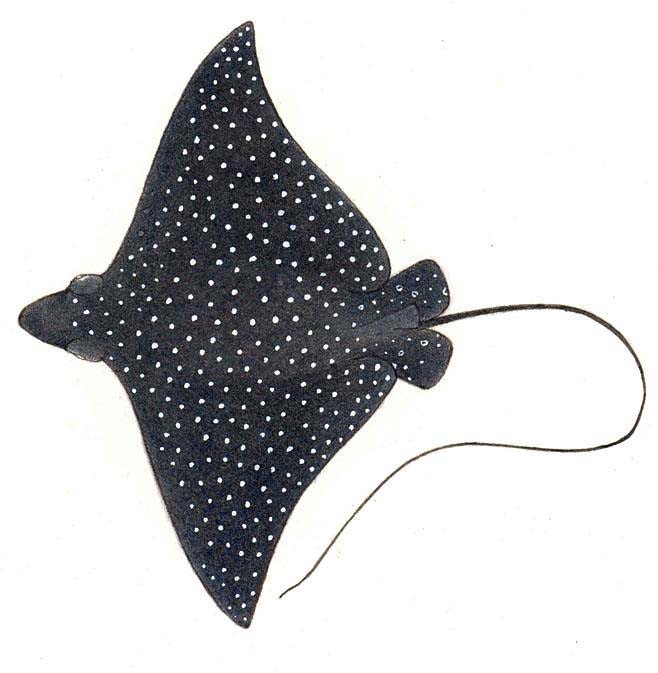|
Aetobatus narinari (Spotted eagleray or
bonnetray)
(Euphrasen, 1790)
Life
> Eukaryotes >
Opisthokonta
> Metazoa (animals) >
Bilateria >
Deuterostomia > Chordata >
Craniata > Vertebrata (vertebrates) > Gnathostomata (jawed
vertebrates) > Chondrichthyes > Elasmobranchii > Batoidei >
Myliobatoidei > Myliobatidae
 |
|
Aetobatus narinari (Spotted eagleray or
bonnetra[Illustration by Ann Hecht ©] |
Identification
A thick-headed eagleray with many small white
spots or rings on its black or bluish disk, a long rounded flat
snout like a duck's bill, sharply curved angular corners on pectoral
disk, and normally a single row of flat, chevron-shaped teeth.
Underside white.
Size
To at least 2.3 m DW and possibly 4 m.
Range
East coast, Knysna to Natal and Mozambique; circumtropical.
Habitat
Shallow tropical inshore waters, often near reefs, at surface and
near bottom.
Biology
An active, agile, powerful, pelagic ray occuring singly or in groups, often leaping from the water. Common
from Natal north but rarely ranging into Eastern Cape waters in the
summer. Eats bivalves, shrimps, crabs, octopi, polychaete worms, and
sometimes fishes. Up to 4 young per litter.
Human Impact
Sometimes
caught by shore anglers after a great struggle.
Text by Leonard J.V. Compagno, David A. Ebert
and Malcolm J. Smale
|
